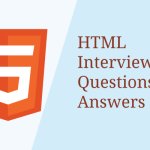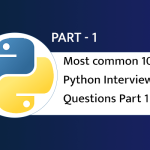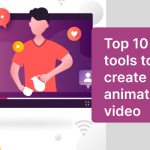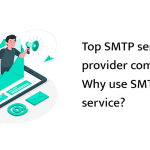Although Core Web Vitals are essential, they are only one aspect of the Page Experience. The terms Page Experience and Core Web Vitals are frequently used interchangeably; however, they relate to two sets of website metrics.
What Are the Core Web Vitals?
The Core Web Vitals are a set of three metrics for the overall Page Experience Search Signals. The launch of Core Web Vitals, as Google calls it, took place on May 28, 2020. The search engine, in the past, focused on providing a secure and convenient browsing experience for visitors and ensuring that the visitor’s experience isn’t disturbed by intrusive interstitials. By introducing Core Web Vitals, Google intends to take user experience to the next level.
In a nutshell, Core Web Vitals are a subset of criteria that will be part of Google’s “page experience” score. This is Google’s way of measuring your page’s overall UX.
What is Page Experience?
Google’s Page Experience is “a set of signals that measure how users perceive the experience of engaging with a web page beyond its pure information value.”
In summary, Page Experience is a newer Google search ranking factor that calculates the quality of a website page’s user experience. Websites that provide users with an amazing page experience are rewarded with prominent placement in search results. So, there will be a mix and match of digital marketing and smooth website functionality to secure the top real estate area of search results.
Why? For one, it’s in Google’s best interests to prioritize only the top-performing websites because doing so increases user confidence in the quality of Google’s search results. Furthermore, with many sites competing to offer high-quality content optimized for search, Google has to rank pages using differentiators beyond the content on pages.
Google uses signals to rank sites based on Page Experience
All of these “page experience signals’ are used by Google to rank websites, but not all of them are given the same weight. The three Core Web Vitals signals—the Largest Contentful Paint (LCP), First Input Delay (FID), and Cumulative Layout Shift (CLS)—are assigned to their group.
All three have the corresponding “poor, needs improvement, and good” thresholds. These are the most critical page experience metrics that Google takes into account. Let’s review each of the Core Web Vitals now:
Largest Contentful Paint (LCP): The phrase Largest Contentful Paint (LCP), a part of Google’s Core Web Vital, refers to how long it takes a page to load from the point of view of an actual user.
In other words, it’s the amount of time it takes from clicking a link to seeing most of the content on the screen. 2.5 seconds is the ideal time (or quicker). It focuses on what matters most regarding page speed: being able to view and use your page.
First Input Delay (FID): This factor calculates how long it takes for a page to become interactive. Essentially, how fast a user can start clicking and tapping on-webpage elements). Less than 100 milliseconds is the ideal measurement. You’ve probably been in a rush and clicked on a website, but nothing happened quickly, so you had to wait. I know it isn’t enjoyable. Google agrees. That is why it’s now a part of Core Web Vitals.
Cumulative Layout Shift (CLS): This signal explains the degree of unexpected layout changes in the visual page content. As the other page elements finish loading, there is a shift in the positioning of certain page elements. Frequently, the shift makes you lose your spot or click the incorrect thing because the button shifted just as you were about to press it.
This is why Google emphasized “shift” as a ranking criterion, which is also highly aggravating. A score of less than 0.1 is considered optimal (tools that check your site for Core Web Vitals will give you this score). To better understand how core web vitals could affect your rankings, you can consult top advertising agencies. Backed by seasoned SEO personnel, these agencies have all the required wherewithals to give your site a considerable leg-up.
Why Are Core Web Vitals Important?
Google intends to make a page’s user experience recognized ranking criteria. Google will consider a variety of variables to be essential for the user experience on a page, including:
- HTTPS
- Mobile-friendliness
- Lack of interstitial pop-ups
- Safe-browsing
- Core Web Vitals will play a huge role in that score.
It’s crucial to note that having a high page experience score won’t automatically push you to the #1 spot in Google. In fact, Google was keen to stress that page experience is just one of the 200+ elements they employ to rank websites in search. The most significant portion of your page experience score, it is safe to say, will likely come from Core Web Vitals.
These non-Core Web Vitals indicators, along with the Core Web Vitals (Largest Contentful Paint (LCP), First Input Delay (FID), and Cumulative Layout Shift (CLS), make up one “Page Experience Signal,” as the tech giant Google named it.
Conclusion
You would have thought why Google is using these many metrics to evaluate so many websites’ performance on these many metrics. Over time, Google has become aware of the necessity for accurate data and users’ pleas for help with secure and fast websites. Until now, you didn’t have great insights into what makes a site quick and what makes one feel fast; it was previously challenging to optimize your website for user experience and speed. By announcing these metrics as ranking factors, Google makes page experience measurable and deems it helpful enough to judge sites.
You May Also Read
- Find out the effectiveness of doing the training courses on public speaking.
- the importance of engaging a professional sewer cleaner from a Sewerage company
- What Can A SharePoint Developer Do For You?
- These Three Smart Bundles Are Perfect for Your New Smart Home
- Best Facebook ads and dropshipping spy tool to try in 2022
- Buying an engagement ring in Brisbane – Consider the 4Cs
- 8 Tech Trends to Watch Out for in 2022











